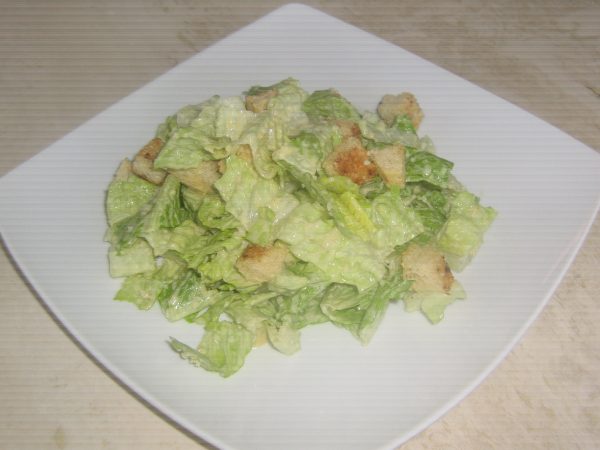Gremolata is an Italian garnish of raw, finely chopped garlic, parsley and lemon zest. It is usually sprinkled over slow-cooked braised meats, as in the Italian dish osso bucco, but it also makes a good garnish for grilled fish or chicken. Here, we are adding it to butter to make a compound butter for grilled steaks.
Print Recipe
Compound Butter Gremolata
Gremolata is an Italian garnish of raw, finely chopped garlic, parsley and lemon zest.
Instructions
Mix all the ingredients together in a bowl. Turn it out onto a sheet of plastic wrap and roll into a tube about 1 inch in diameter. Refrigerate until ready to use. When ready to use, slice off 1/2 inch piece and add to hot steaks while resting.
Recipe Notes
This compound butter can be stored in the refrigerator for up to a month. Use it as needed to add flavor to steaks, fish, pork, chicken, or use it to cook omelettes. © Galley Chef All Rights Reserved
Cacciatore means “hunter” in Italian. “Hunter-style” refers to dishes made with the hunters catch of the day, such as rabbit or chicken, with tomatoes, onions, herbs, bell peppers and sometimes wine. The northern Italian chefs often used white wine in this dish, whereas in southern Italy, red wine is often used.
Print Recipe
Chicken Cacciatore with Red Wine and Herbs
This classic Italian dish is perfect on a cold winter night with a good red wine and some crusty bread.
Instructions
Salt and pepper the chicken on both sides. Sauté in olive oil over medium heat until light brown on each side. Transfer to a plate and set aside.
Add the bell pepper, onion, and garlic, crushed red pepper, and oregano and cook until tender, about 10 minutes. Season with salt and pepper.
Add the tomatoes with their juice, chicken stock, red wine, capers and oregano. Return the chicken to the pan and coat in the sauce. Add the rosemary. Bring the sauce to a simmer over low heat and cook for about 10 minutes. Transfer to a platter, sprinkle with basil and serve.
Recipe Notes
Serve this with pasta and some good crusty bread to sop up the sauce with. © Galley Chef All Rights Reserved
Eggplant Parmesan is rich, gooey, yummy and nutritious comfort food that can be used as a vegetarian main dish or a side dish to any meal. It is unclear where this dish originated. Both the Southern regions of Campania and Sicily, and the Northern province of Parma claim to have originated eggplant parmesan.
Print Recipe
Eggplant Parmesan
A rich healthy vegetarian dish that can be used as a main course or a side dish.
Instructions
Saute onion and garlic in 1/4 cup oil till lightly golden. Add tomatoes, sauce, salt and herbs. Cover and simmer 20 minutes, stirring occasionally.
Combine bread crumbs, 1/2 teaspoon salt, and 1/2 cup parmesan cheese. Peel eggplant and cut into 1/2 inch thick slices. Dip each slice into egg then bread crumb mixture. Brown in remaining oil about 2 minutes on each side. Be sure to keep pan clean between additions of eggplant to eliminate burnt bits. Spoon sauce in the bottom of a shallow casserole pan to coat the bottom. Arrange eggplant over the sauce. Top with mozzerella cheese then more sauce. l Sprinkle with parmesan cheese. Bake at 400 degrees for 20 minutes until hot and bubbly.
Recipe Notes
Recipe Notes The onions add sweetness to the sauce. If you want to skip the onions, add a teaspoon of sugar to balance out the acidity in the tomatoes. To impress guests at a dinner party, purchase round molds and stack the eggplant, cheese and sauce in the individuals molds before baking. © Galley Chef All Rights Reserved
Chiffonade is a french term referring to a chopping technique that results in cutting long thin confetti-like strips. This is accomplished by stacking leaves, rolling them tightly, then slicing the leaves perpendicular to the roll. The technique can also be applied to crepes or thin omelets to produce strips.
Print Recipe
How to Chiffonade
Chiffonade is a french term referring to a chopping technique that results in cutting long thin strips.
Instructions
-
-
Slice leaves thinly perpendicular to the roll.
Recipe Notes
© Galley Chef All Rights Reserved

